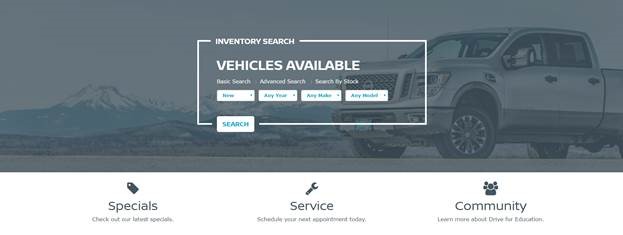

You know what’s cool? Having a website that shows how awesome you are. Even cooler than that? Having a website that gets clicks & conversions. Ice Cube may have been All About the Benjamins, but if you’re hoping to do some business on your website, then you need to be All About the Conversions.
What is it?
So what is website conversion, exactly? Simply put, it’s the practice of making systematic updates to a website over time to increase the likelihood of site visitors converting. It’s a very general, broad term and doesn’t refer to any one particular metric.
In fact, it’s a bit of a relative term, since every site converts a bit differently – especially across multiple industries. Are you a pizza delivery site? Then having a big, red “Order Now!” button is 100% essential. Are you a financial consulting firm? Form submissions are probably the way that your customers get ahold of you.
How do you do it?
Take into consideration a wide range of website metrics and factors – bounce rates, average time on page, CTRs for pages and individual buttons, scroll depth, and, of course, heat-mapping. Since these are all ways to measure how your visitors are interacting with your website, let’s start here.
You can gauge how well a particular asset on your page is performing by looking at how your website audience is interacting with it. From there, you can judge how important it is compared to other elements of that same webpage. Let’s try it out.

Take a look at the webpage above, and notice the “Community” Quick-Link in the bottom right corner.
Since buttons are clicked on by users, we could look at the total number of clicks on the above webpage and see how many are going to the “Community” button. If, for example, we found that it was receiving less than .1% of the clicks from site visitors over the last 30 days, that might tell us that we ought to test against another button.
Since this webpage is a “quick-search” for new & used cars, we might try a button for “Vehicles Under $15K” to see if that helps drive user flow and boost conversion levels.
Ok, but how do you test it?
Fair question. Essentially, A/B testing is the cornerstone upon which all effective optimization changes are made. We can investigate the strength of a website asset in many ways (see previous section), but its impact can be far reaching. That is, you have to look at the big picture, and not just the metrics for that particular page.
That’s where A/B testing comes in. In the example above, we swapped out one link for another.
So then, in order to successfully find out which version of the site is better, we randomly show each visitor a variation of the site (with or without the change) in order to ascertain the effectiveness. Once enough data has accumulated, we have two datasets over the same period of time (to avoid seasonal shifts in data) with a singular change between them that can easily be compared for higher or lower conversion rates. If the new change has a higher conversion rate, the change should be made permanent.
What now?
In the coming weeks, I’ll talk about some specific elements of your website that can be optimized for conversion. Next month, I’ll focus on your homepage, and the most common elements therein – like headers, contact info, search bars, banners, and more.
In the meantime, you’ll want to have access to your Google Analytics account so that you can, well, analyze metrics like CTR, bounce rates, time spent on site, unique visits, etc. Other tools, like the Chrome extension Page Analytics or the Crazy Egg script, can help you look at your site’s heatmap.
Happy optimizing!
To see the next article in this series, Homepage Optimization, click here.


